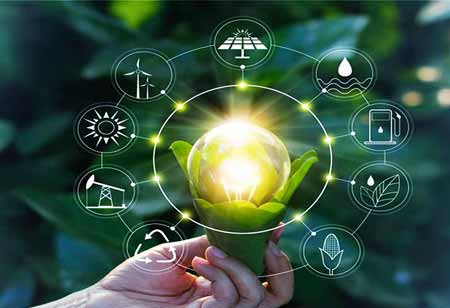Thank you for Subscribing to Energy Business Review Weekly Brief
Fast-Tracking LNG Production in the Asia Pacific
In the Asia Pacific's pursuit of a sustainable future, liquefied natural gas (LNG) emerges as a crucial element, providing a pathway to stability, flexibility, and decarbonisation.

By
Energy Business Review | Wednesday, October 25, 2023
Stay ahead of the industry with exclusive feature stories on the top companies, expert insights and the latest news delivered straight to your inbox. Subscribe today.
LNG is advancing the region's energy landscape by meeting the demands for cleaner energy sources and reducing carbon emissions in the Asia Pacific.
FREMONT, CA: In the Asia Pacific's pursuit of a sustainable future, liquefied natural gas (LNG) emerges as a crucial element, providing a pathway to stability, flexibility, and decarbonisation. With the global shift from carbon-heavy practices to cleaner energy alternatives, striking a balance between immediate energy needs and long-term environmental priorities becomes more pressing.
The ongoing energy challenges emphasise the vulnerabilities of regions heavily dependent on fossil fuels, and Southeast Asia falls into this category. The International Energy Agency's call to accelerate renewable energy generation aligns with the region's efforts to harmonise energy security, reliability, and emissions reduction objectives.
Efficiently incorporating more variable renewable energy sources into the power grids of the Asia Pacific region demands a seamless integration of generation, transmission, and distribution technologies. Technological balance is crucial for enhancing energy security and achieving ambitious decarbonisation goals in an era marked by unpredictable climate change impacts.
The growing demand for LNG, especially for large-scale gas-fired power generation in maritime nations, underscores its potential as a dependable energy source, bridging the transition from retiring coal-fired facilities to rapidly adopting renewables and emerging clean energy solutions. Meeting the rising LNG demand necessitates scaling production, expediting market entry, and maintaining competitive pricing.
Addressing the energy challenge in the Asia Pacific region necessitates innovative strategies like floating LNG (FLNG) and modularisation. These innovations unlock previously inaccessible gas reserves and swiftly monetise offshore resources, enhancing efficiency and environmental benefits. FLNG technology extends LNG applications from peak shaving to vehicle fueling, baseload energy, and offshore operations. PRICO's versatile and scalable liquefaction technology offers adaptable solutions for small-, mid-, and large-scale facilities, making it a valuable option for onshore, offshore, and nearshore LNG projects. For Asia Pacific economies without gas production assets, importing LNG is a viable route, requiring the development of import terminals and associated infrastructure.
Adapting LNG for a Decarbonised World
While LNG serves as a transitional energy source in the Asia Pacific's energy shift, its infrastructure can be modified to accommodate the evolving roles of hydrogen and ammonia in the global energy landscape. Ammonia, renowned for fertiliser production, is gaining prominence as a stable carrier for hydrogen, offering superior energy density for more manageable storage and transportation.
LNG facilities can be adapted for ammonia handling similarly to LNG, addressing technical and economic challenges. Combining LNG infrastructure with carbon capture, utilisation, and storage (CCUS) capabilities and renewable energy utilisation reduces carbon emissions. Forward-thinking LNG facilities can tap into additional revenue streams by producing biogas, hydrogen, and ammonia, aligning with the region's energy transition goals.
LNG is poised to accelerate the Asia Pacific's transition to a low-carbon future by bolstering grid stability and resilience. Capital-efficient projects, particularly floating solutions, are at the forefront, leveraging mid-scale train capacity, modular execution, and integrated hull storage to minimise on-site work. Furthermore, adopting nearshore FLNG technology over traditional onshore facilities eliminates various infrastructure, labour, and environmental constraints, yielding notable cost and scheduling benefits.






